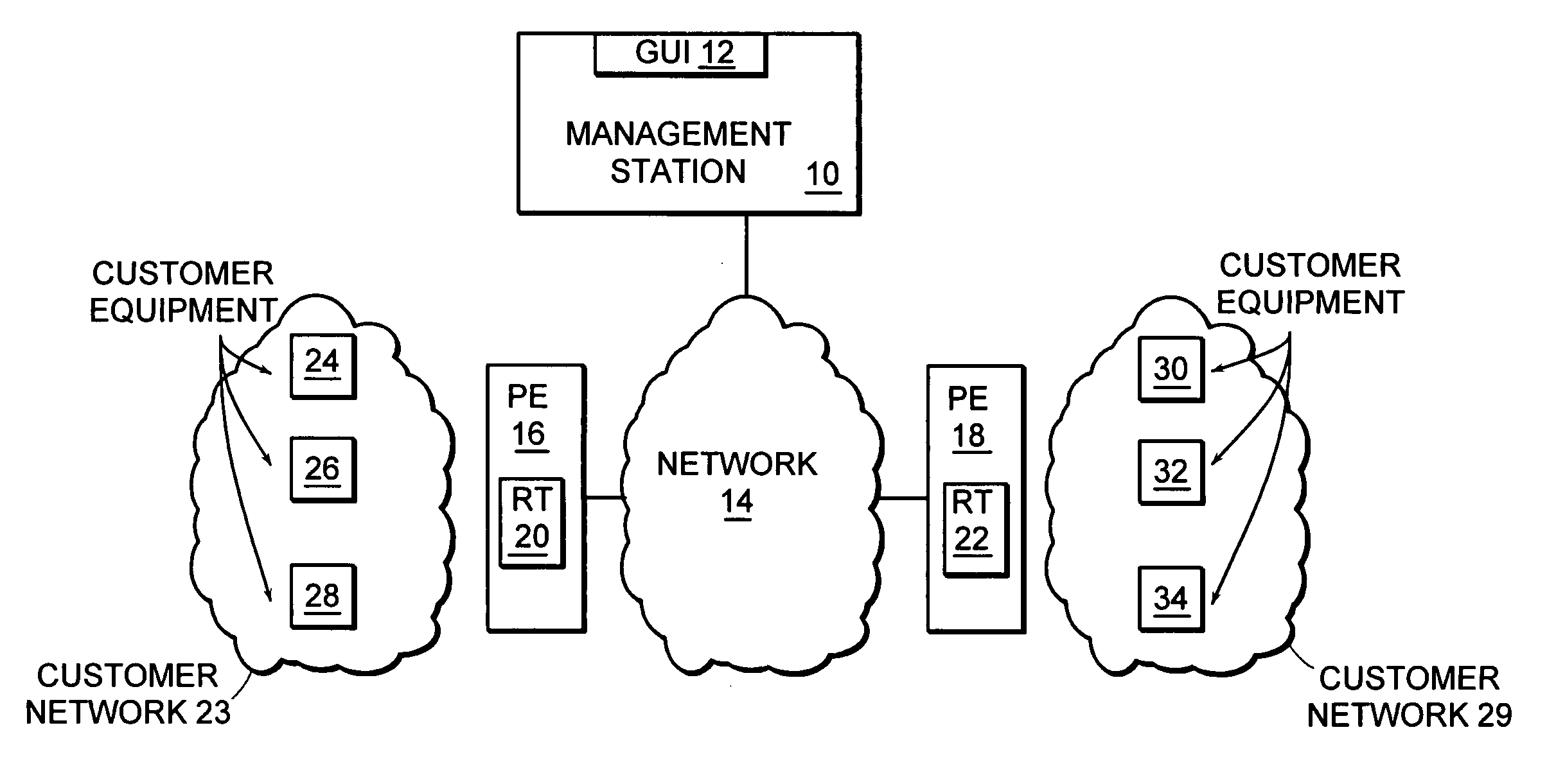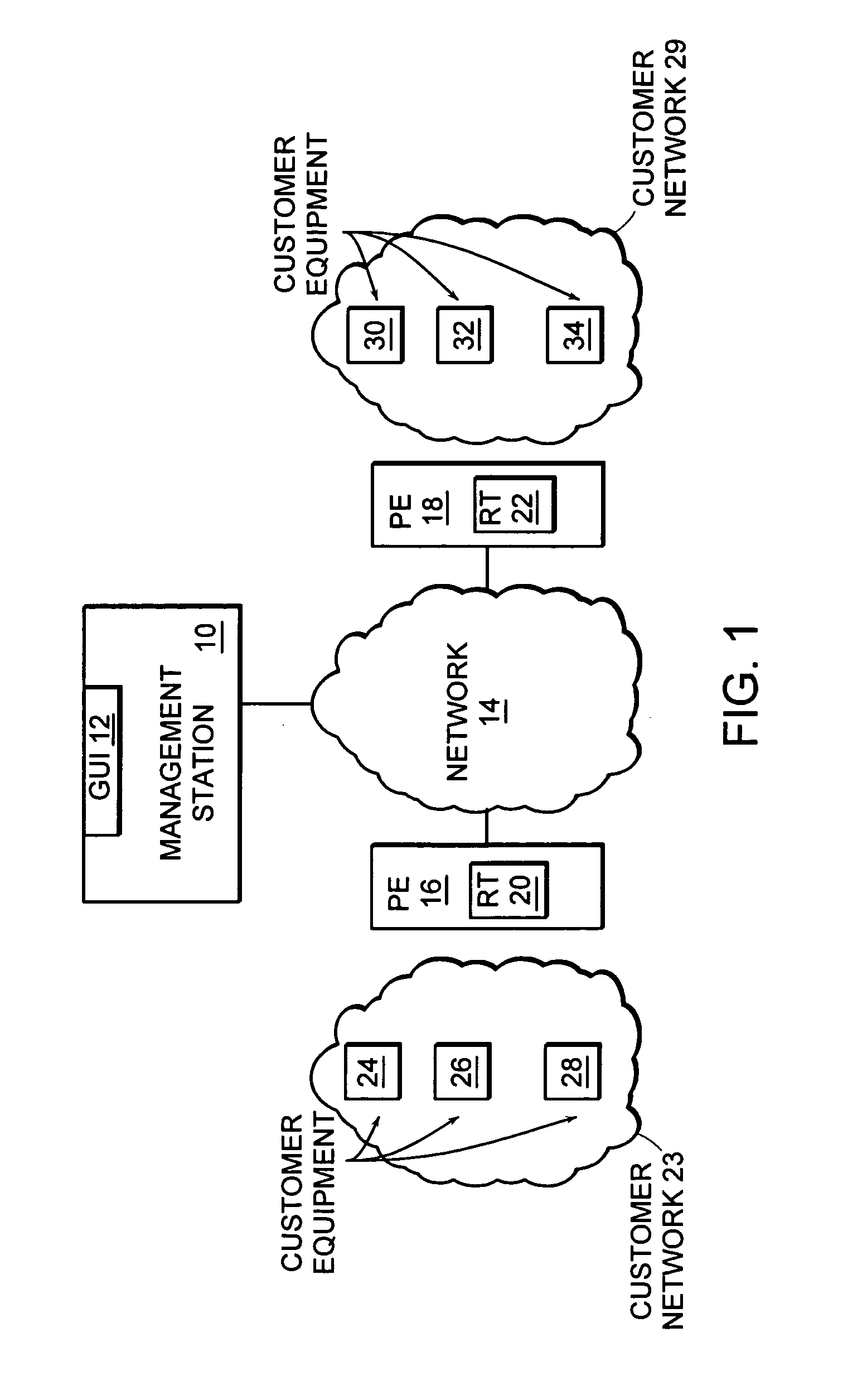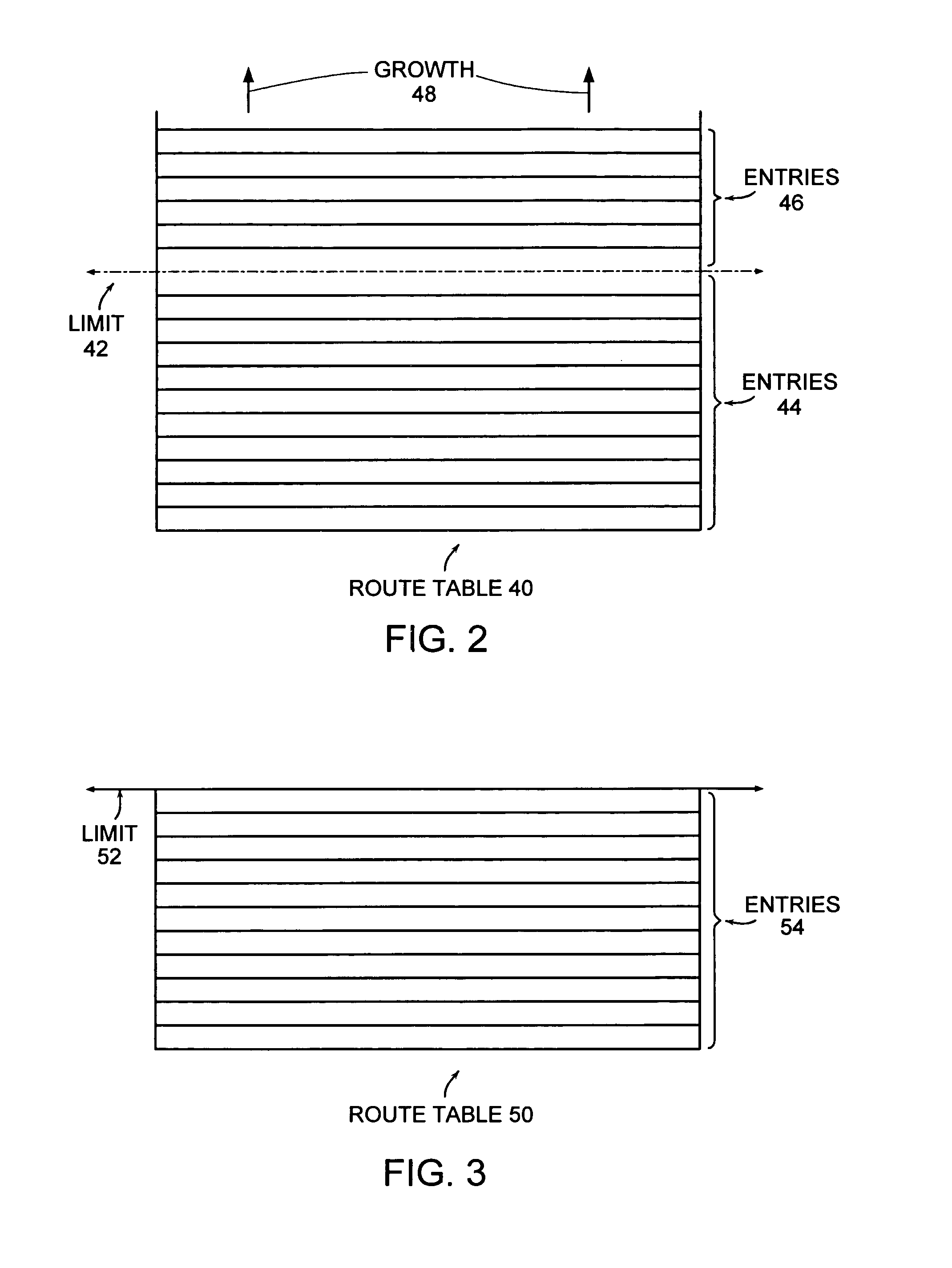Method and system for providing configurable route table limits in a service provider for managing VPN resource usage
a technology of resource usage and route table limits, applied in the field of communication systems, can solve the problems that the actual utilization of isp controlled resources does not accurately reflect the actual utilization of isp resources, and achieve the effects of avoiding over-use of service provider infrastructure resources, and reducing the cost of vpn services
- Summary
- Abstract
- Description
- Claims
- Application Information
AI Technical Summary
Benefits of technology
Problems solved by technology
Method used
Image
Examples
first embodiment
[0021]FIG. 2 is a block diagram showing a first example of a route table in accordance with the disclosed system. As shown in FIG. 2, a route table 40 is associated with a limit 42 reflecting a number of entries that may be added to the route table 40 before a predetermined action is performed. In the embodiment of FIG. 2, the disclosed system operates to allow routes added in excess of the limit 42. Accordingly, the entries 44 are within the limit 42, while the entries 46 are above the limit 46. Growth of the table 40 is further permitted in the direction 48 shown in FIG. 2. The number of entries 46 above limit 42 represent routes in excess of a route limit for a VPN associated with the route table 40. The disclosed system may operate to maintain a count of the entries in excess of the limit 42, for the purpose of charging a customer associated with the VPN for the route table 40 an amount based on the number of routes in excess of the limit 42. Accordingly, the route table 40 illu...
second embodiment
[0022]FIG. 3 is a block diagram showing a second example of a route table in accordance with a second embodiment, in which a policy disallows routes to be added to a route table in excess of a route table entry limit. As shown in FIG. 3, the route table 50 includes entries 54 up to a limit 52. Since the policy for the embodiment of FIG. 3 indicates that route requests beyond the limit 52 are to be refused, no further route table entries can be added to the route table 50.
[0023]FIG. 4 shows an illustrative embodiment of entries in a route table configuration table, shown as the route limit policy rules 60. The entries 62 of the route limit policy rules 60 each include a time range 64, route limit 66, alarm threshold 68, accept / reject field 70, and prefix field 71. Each of the entries 62 is associated with a VPN offered to an associated customer of a service provider. The route limit policy rules 60 may be stored within the management station 10, or another system or systems under con...
PUM
 Login to View More
Login to View More Abstract
Description
Claims
Application Information
 Login to View More
Login to View More - R&D
- Intellectual Property
- Life Sciences
- Materials
- Tech Scout
- Unparalleled Data Quality
- Higher Quality Content
- 60% Fewer Hallucinations
Browse by: Latest US Patents, China's latest patents, Technical Efficacy Thesaurus, Application Domain, Technology Topic, Popular Technical Reports.
© 2025 PatSnap. All rights reserved.Legal|Privacy policy|Modern Slavery Act Transparency Statement|Sitemap|About US| Contact US: help@patsnap.com



